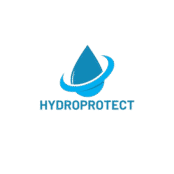Understanding Hotmelt Roof Waterproofing
Hotmelt roof waterproofing is an advanced insulation technology renowned for its durability and effectiveness. This method stands out among other insulation solutions, offering a host of benefits that appeal to hall and warehouse owners, developers, and property managers. Understanding the intricacies of hotmelt roofing starts with appreciating its composition and application techniques.
What is Hotmelt Roofing?
Hotmelt roofing involves the use of a rubberized, asphaltic material that is heated to a liquid state before being spread across a roof surface. This molten material adheres seamlessly to the deck, creating a robust, monolithic waterproof layer. Unlike traditional roofing systems that often rely on mechanical fasteners or adhesives that may degrade over time, hotmelt offers a continuous barrier that is less susceptible to leakage.
Application Techniques
Application of hotmelt roofing is a meticulous process, starting with surface preparation. Once the roof deck is clean and primed, the hotmelt material is applied in a patterned manner to ensure even distribution. This technique not only enhances durability but also reinforces the waterproofing barrier against potential damages or punctures.
Advantages of Hotmelt Roof Waterproofing
When considering insulation solutions, hotmelt roofing emerges as a compelling option due to its myriad advantages. Below, we explore some of the critical benefits that make it a preferred choice for industrial and commercial properties.
Unmatched Durability
One of the primary reasons property managers and developers opt for hotmelt systems is their incredible durability. Hotmelt roofs can withstand extreme weather conditions, from heavy rains to intense sunlight, without compromising their integrity. The monolithic nature of the hotmelt layer ensures there are no seams or joints vulnerable to water penetration.
Cost-Effectiveness Over Time
While the initial cost of hotmelt roofing might be higher than some alternative methods, the long-term savings it affords can be substantial. Due to its resilience and longevity, hotmelt roofing requires less frequent repairs and maintenance, ultimately reducing overall lifecycle costs. For large-scale facilities like warehouses, this can translate into significant financial savings over the years.
Environmental Benefits
Hotmelt roofing systems also offer environmental advantages. Many hotmelt materials are manufactured with recycled content, and their long service life helps minimize landfill waste. Moreover, by providing excellent insulation, hotmelt roofs can reduce energy consumption in buildings, leading to lower carbon footprints and energy costs.
How Hotmelt Compares to Other Waterproofing Methods
When evaluating different roofing systems, it’s essential to consider how hotmelt compares to other common insulation methods. Below, we look at two of the most frequently used alternatives: bituminous and single-ply membranes.
Bituminous Membranes
Bituminous membranes are another popular choice for roof waterproofing. Although they are effective, these membranes rely heavily on mechanical fasteners and adhesives prone to degradation. In contrast, hotmelt systems offer a more durable, seamless finish that eliminates the risks associated with seams and fasteners.
Single-Ply Membranes
Single-ply membranes provide a simpler installation process but fall short in terms of durability compared to hotmelt. Over time, they are more susceptible to punctures and degradation from UV exposure. Meanwhile, hotmelt systems provide a robust, UV-resistant surface suitable for a wide range of environments.
Key Considerations for Hotmelt Roof Installation
Successful hotmelt roof installation demands attention to detail and expertise. For property managers and developers, understanding these critical considerations can ensure optimal results and performance.
Selecting the Right Contractor
Choosing an experienced and reputable contractor is crucial. Their expertise will ensure the hotmelt material is applied correctly and efficiently, avoiding common pitfalls that could compromise the roof’s integrity.
Proper Surface Preparation
The foundation of an effective hotmelt system lies in thorough surface preparation. This step involves cleaning and priming the deck to create an ideal binding surface for the hotmelt material. Proper preparation is key to maximizing the adhesion and longevity of the roofing system.
Summary
Hotmelt roof waterproofing presents a robust, long-lasting solution for industrial and commercial properties. With its unmatched durability, cost-effectiveness over time, and environmental benefits, hotmelt is a superior choice compared to other insulation methods. Property managers and developers can enhance the longevity and performance of their roofs by opting for hotmelt solutions, while also benefiting from significant long-term savings. Proper installation by expert contractors and meticulous surface preparation are critical to realizing these benefits and ensuring optimal roof performance.

